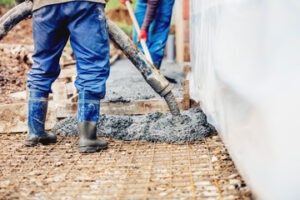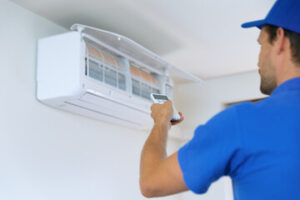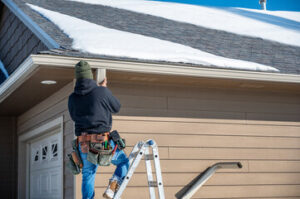Concrete Contractors use their expertise to transform construction projects and ensure they meet all requirements. Their knowledge allows them to recommend cost-effective solutions without compromising quality.

The top concrete businesses also provide a warranty for their work. This is a good indicator of how confident they are in their products and services.
When evaluating concrete contractors, you should consider their experience and the type of projects they have worked on. A contractor with extensive experience working with the type of project you need will have an excellent understanding of the challenges and requirements of your specific job. They will also be able to anticipate any challenges that may arise during the project and develop solutions accordingly.
Additionally, a reputable contractor should have a strong understanding of industry standards and best practices. This enables them to deliver high-quality results that meet or exceed expectations. Inquire about the concrete contractor’s commitment to quality and safety protocols. They should be able to clearly communicate their process and provide detailed estimates that include all costs. Lastly, they should be able to work with you to ensure that the project’s timeline and budget are aligned.
Experienced Concrete Contractors are familiar with the various processes involved in the construction of concrete structures and the materials used. They are skilled at preparing the site and pouring, finishing, and curing concrete. They are also experienced in repairing and maintaining concrete infrastructure. These professionals have the necessary expertise to complete a variety of concrete construction projects, including residential, commercial, and industrial construction.
In addition to technical expertise, a good concrete contractor should have excellent communication skills and be able to collaborate with architects, engineers, and other construction professionals. They should be able to resolve problems that may arise during the construction process, such as formwork issues or concrete placement challenges. They should also be able to coordinate the work of subcontractors and ensure that all aspects of the construction are progressing as planned.
When evaluating concrete contractors, you should ask them about their past projects and request references. You can then contact these references to learn more about the contractor’s work ethic, timeliness, and cost. You should also evaluate their commitment to sustainable and environmentally-friendly construction practices. Ask about their methods for disposing of waste materials and the use of eco-friendly concrete mixes. Additionally, you should assess their safety protocols and see how they prioritize the health and wellbeing of their workers.
License
Concrete Contractors are trained to plan and execute projects with the end goal of ensuring a project meets and exceeds expectations. They understand the materials they work with and how to use them efficiently, saving you time and money. Their attention to detail is unmatched and allows them to create unique designs that are both functional and beautiful. Licensed contractors have years of experience working on construction sites and know how to manage the flow of work to ensure projects are completed on schedule.
While you may be tempted to save some money by hiring an inexperienced, unlicensed concrete contractor, doing so could end up costing you more money in the long run. Licensing requirements for concrete contractors are rigorous and designed to ensure that contractors have the knowledge and skill set necessary to work safely and effectively. They must pass an examination that covers both business and law, as well as their specific trade.
Licensing requirements for concrete contractors vary from state to state. Some states have a decentralized system, whereby responsibility for licensing falls to individual cities and towns. This can lead to a variety of local requirements, varying fees and distinct standards that contractors must meet. In addition to meeting state licensing requirements, concrete contractors must have sufficient financial management skills to manage project budgets and adhere to strict accounting principles.
Those who specialize in concrete and asphalt construction secure the C8 license, which authorizes them to construct and repair a range of concrete structures, including sidewalks, driveways, parking lots and foundations. They must also be licensed to perform non-structural remodels and repairs, such as interior upgrades and cosmetic updates.
To obtain a license, candidates must have at least four years of relevant work experience and successfully complete the exam. Most states also require a background check, which can be conducted by the state or the licensing board. In addition, applicants must pay a fee that varies from state to state. Those who are not licensed and/or do not comply with licensing requirements can face fines and even legal action in extreme cases.
Insurance
Concrete Contractors are responsible for creating the foundation of many of the major buildings and structures we use every day. As with any business, these professionals face liability risks that can result in costly legal actions and lost income. In order to protect themselves against these risks, most contractors make getting insured a top priority for their businesses.
There are several insurance types that are essential for Concrete Contractors. First and foremost, they need general liability insurance. This type of policy safeguards the business against third-party claims for property damage or bodily injury. In addition, it may cover the cost of medical bills or legal fees associated with a claim.
A professional liability policy, or errors and omissions (E&O) insurance, is also important for Concrete Contractors. This type of policy covers claims for damages due to negligence or mistakes in the work that the contractor performs. In some cases, clients will require that the contractor have this insurance before they sign a contract.
Lastly, Commercial Auto insurance is crucial for Concrete Contractors who need to transport materials and equipment to and from job sites. It is possible to find competitive quotes for this type of coverage with our online quote comparison service.
In addition, Concrete Contractors should also consider obtaining tools and equipment insurance, which is often referred to as inland marine. This type of insurance offers protection for the contractor’s valuable tools and equipment against theft or damage while on-site or in storage. Inland marine quotes typically range from $1,200 to $4,500 annually.
Builder’s risk insurance is another type of coverage that is important for Concrete Contractors to have. This type of insurance safeguards ongoing construction projects against risks such as fire, water, and weather damage. The premium for this coverage is usually between $2,000 and $8,000.
In addition, Concrete Contractors should consider a surety bond, which is a type of insurance that guarantees the contractor will fulfill their responsibilities to clients. This is a necessary requirement for most states in order to obtain a license, and it provides reassurance to customers that the contractor will not disappear with their money if something goes wrong on a project.
Free Estimate
A concrete contractor is a professional who installs and repairs concrete structures around the home. They specialize in patios, sidewalks, driveways, and more. The quality of their work can have long-term effects on your property value and appearance. When choosing a concrete contractor, be sure to consider their experience, licenses, and references. In addition, you should always request a free estimate before hiring them for any project.
Getting an estimate before beginning a concrete project is essential to understanding the cost of the job. This can help you budget and compare prices between different contractors. Many contractors offer price quotes on their websites, so you can easily find one that suits your needs. You should also ask for referrals from friends and family to get an idea of the contractors’ reputation.
Once you have found a few potential contractors, it is important to evaluate their qualifications and experience. Read online reviews and check their licenses to ensure that they are reputable and insured. In addition, you should examine their past projects to see examples of their work and customer satisfaction. Lastly, you should ask for a list of references and contact information so that you can verify their credentials.
Concrete is an inexpensive, durable building material that is used in a variety of applications around the home. It can be formed into almost any shape, and it can be stained or colored to create a unique aesthetic. Whether you need a new driveway, sidewalk, or patio, a concrete contractor can help you design and build your dream structure. To get started, look for a local contractor that offers free estimates. Then, browse their website for pricing details and contact information. With these tips, you can find the right concrete contractor for your next project.


